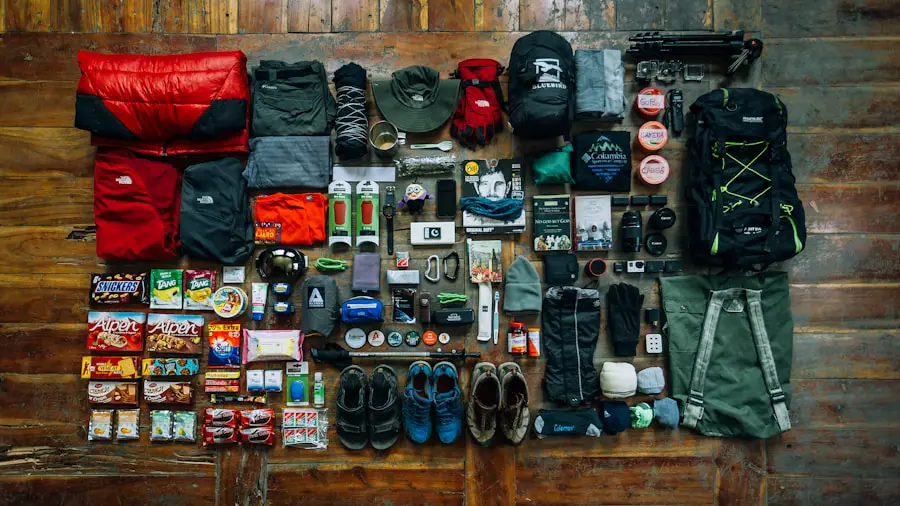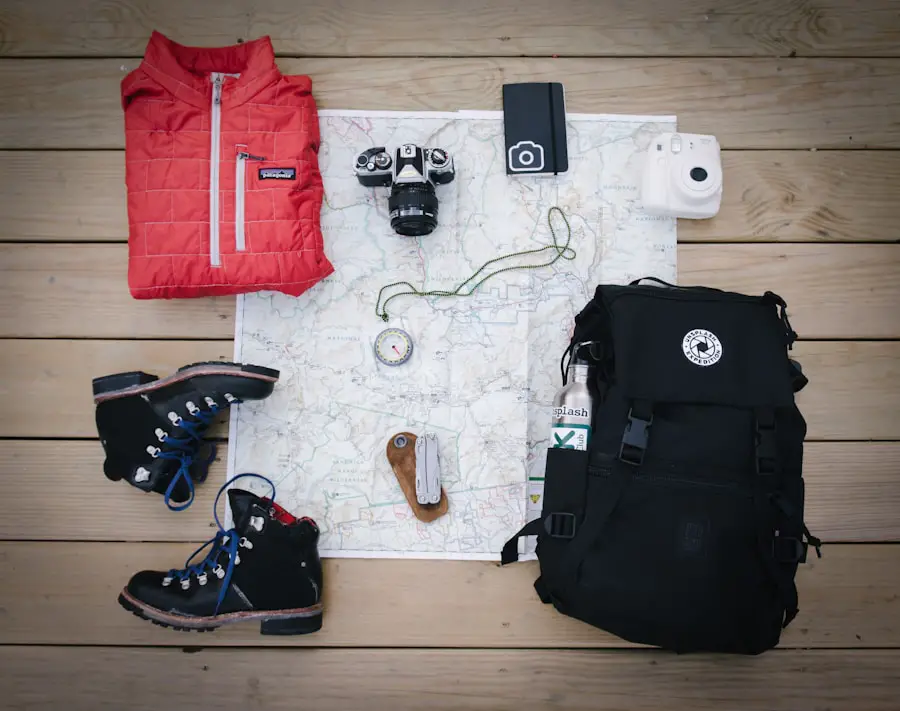Selecting the appropriate trail is a fundamental step in ensuring a successful hiking experience. The choice of trail can significantly influence not only the enjoyment of the hike but also the safety and comfort of the hiker. Factors such as difficulty level, length, terrain type, and environmental conditions should be carefully considered.
For instance, beginners may want to start with well-marked, relatively flat trails that offer scenic views without the added challenge of steep inclines or rocky paths. Trails like the Appalachian Trail’s easy sections or local nature reserves often provide a gentle introduction to hiking, allowing newcomers to build confidence and skills. In contrast, seasoned hikers may seek out more challenging routes that test their physical limits and navigational skills.
Trails that feature elevation gains, rugged terrain, or technical sections can provide a rewarding experience for those who are well-prepared. For example, the challenging ascent of Mount Whitney in California offers breathtaking views but requires a good level of fitness and preparation. Additionally, it’s essential to consider seasonal factors; some trails may be inaccessible during winter months due to snow or mudslides, while others may be best enjoyed in spring or fall when temperatures are milder and flora is vibrant.
Key Takeaways
- Choose a trail that matches your fitness level and experience to ensure an enjoyable and safe hike.
- Essential gear for hiking includes proper footwear, clothing, navigation tools, first aid kit, and plenty of water and snacks.
- Safety tips for hiking include informing someone of your plans, staying on marked trails, being aware of wildlife, and being prepared for changing weather conditions.
- Planning your hike involves researching the trail, checking the weather forecast, and packing accordingly.
- Understanding trail markings is crucial for staying on course and knowing where you are at all times during your hike.
- Leave no trace principles emphasize the importance of minimizing your impact on the environment by packing out all trash and leaving natural objects undisturbed.
- Building endurance for hiking involves regular physical activity, gradually increasing the difficulty of your hikes, and staying consistent with your training.
- Finding hiking buddies can enhance the experience and provide an added layer of safety and support during your outdoor adventures.
Essential Gear for Hiking
Footwear: The Most Critical Piece of Equipment
At the very least, hikers should invest in a sturdy pair of hiking boots that provide adequate support and traction. Footwear is often the most critical piece of equipment; poorly chosen shoes can lead to blisters, discomfort, or even injuries. Brands like Merrell and Salomon offer a range of options tailored to different terrains and preferences, ensuring that hikers can find a suitable fit for their needs.
Clothing and Accessories for Comfort and Protection
In addition to footwear, clothing plays a vital role in maintaining comfort during hikes. Layering is key; wearing moisture-wicking base layers, insulating mid-layers, and waterproof outer layers can help regulate body temperature and protect against changing weather conditions. Accessories such as hats, gloves, and sunglasses are also important for sun protection and warmth.
Packing Essentials for a Safe and Successful Hike
Furthermore, carrying a well-stocked backpack is essential. A basic daypack should include items like water bottles or hydration systems, snacks, a first-aid kit, a map or GPS device, and a multi-tool or knife. Each of these items contributes to a safer and more enjoyable hiking experience.
Safety Tips for Hiking

Safety should always be a top priority when embarking on a hiking adventure. One of the most critical aspects of hiking safety is being aware of one’s surroundings and understanding potential hazards. This includes recognizing wildlife encounters, such as bears or snakes, and knowing how to react appropriately.
For instance, if you encounter a bear on the trail, it’s essential to remain calm, avoid direct eye contact, and back away slowly while speaking in a low voice. Understanding local wildlife behavior can significantly reduce risks associated with animal encounters. Another vital safety tip is to inform someone about your hiking plans before heading out.
Sharing your itinerary with a friend or family member ensures that someone knows your expected return time and can alert authorities if you do not return as planned. Additionally, it’s wise to carry a fully charged mobile phone for emergencies; however, hikers should not rely solely on cell service as many remote areas lack coverage. Familiarizing oneself with basic first-aid techniques can also be beneficial; knowing how to treat common injuries such as sprains or cuts can make a significant difference in an emergency situation.
Planning Your Hike
| Trail Name | Distance (miles) | Elevation Gain (feet) | Difficulty |
|---|---|---|---|
| Appalachian Trail | 2,190 | 464,464 | Difficult |
| Pacific Crest Trail | 2,653 | 57,000 | Difficult |
| John Muir Trail | 211 | 46,000 | Moderate |
Effective planning is essential for a successful hiking trip. Before setting out, hikers should research their chosen trail thoroughly. This includes understanding the trail’s length, estimated time to complete it, elevation changes, and any potential hazards such as river crossings or unstable terrain.
Websites like AllTrails provide detailed information about various trails, including user reviews and photos that can help in making informed decisions. Weather conditions are another critical factor to consider during the planning phase. Checking forecasts for the day of the hike can help determine appropriate clothing and gear to bring along.
It’s also wise to prepare for unexpected weather changes by packing extra layers or rain gear. Additionally, hikers should consider their physical fitness level when planning their route; selecting a trail that matches one’s abilities can prevent exhaustion and enhance enjoyment. Creating a flexible itinerary that allows for breaks and exploration can also contribute to a more fulfilling experience on the trail.
Understanding Trail Markings
Trail markings serve as essential navigational aids for hikers, guiding them along designated paths while helping to prevent them from getting lost. Different regions may use various systems of markings; understanding these symbols is crucial for safe navigation. Commonly used markers include colored blazes painted on trees or rocks, which indicate the trail’s direction and status.
For example, a single white blaze might signify a maintained trail, while double blazes could indicate an upcoming turn. In addition to blazes, some trails utilize signs that provide information about distances to landmarks or junctions. Familiarizing oneself with these markers before hitting the trail can enhance confidence in navigation.
It’s also important to note that not all trails are marked equally; some may have faded or missing markers due to weathering or vandalism. Carrying a map or GPS device as a backup navigation tool is advisable for those venturing into less-traveled areas where trail markings may be sparse.
Leave No Trace Principles

The Leave No Trace principles are fundamental guidelines designed to minimize human impact on natural environments while enjoying outdoor activities like hiking. These principles encourage hikers to respect nature by practicing responsible behaviors that protect ecosystems and wildlife habitats. One of the core tenets is to plan ahead and prepare; this includes researching trails and understanding regulations regarding campfires or waste disposal.
Another critical principle is to stay on designated trails to prevent soil erosion and protect native vegetation. Straying off established paths can lead to habitat destruction and negatively impact local wildlife populations. Additionally, hikers should always pack out what they pack in; this means carrying out all trash, leftover food, and personal items to keep natural areas clean and pristine.
By adhering to these principles, hikers contribute to preserving the beauty of nature for future generations while enjoying their outdoor adventures.
Building Endurance for Hiking
Building endurance is essential for those looking to tackle longer or more challenging hikes successfully. Developing cardiovascular fitness through regular aerobic exercises such as running, cycling, or swimming can significantly enhance stamina on the trail. Incorporating interval training into workouts can also improve overall endurance by simulating the varied intensity levels experienced during hikes.
Strength training is equally important; focusing on core muscles and leg strength can help hikers navigate uneven terrain more effectively. Exercises like squats, lunges, and planks can build the necessary strength for climbing hills and maintaining balance on rocky paths. Additionally, gradually increasing hike distances over time allows individuals to adapt physically while building confidence in their abilities.
Engaging in shorter hikes with friends or family can also provide motivation while fostering camaraderie among fellow outdoor enthusiasts.
Finding Hiking Buddies
Hiking can be an enriching experience when shared with others; finding hiking buddies not only enhances safety but also adds an element of enjoyment through shared experiences and camaraderie. One effective way to connect with fellow hikers is by joining local hiking clubs or outdoor organizations that organize group hikes regularly. These clubs often cater to various skill levels and interests, making it easier for individuals to find companions who share similar goals.
Social media platforms and apps dedicated to outdoor activities also provide opportunities for connecting with other hikers. Websites like Meetup allow users to find local hiking groups based on specific interests or skill levels. Additionally, engaging with online forums or communities focused on hiking can lead to friendships with like-minded individuals who are eager to explore new trails together.
Sharing experiences with others not only enriches the hiking journey but also fosters a sense of community among outdoor enthusiasts who appreciate nature’s beauty together.
If you’re looking to start hiking, one essential piece of gear to consider is a good pair of compact binoculars. These can enhance your experience by allowing you to spot wildlife and take in the scenery from a distance. For more information on choosing the right pair of binoculars for hiking, check out this article on compact binoculars for hiking. Additionally, having a quality sleeping bag is crucial for backpacking trips. To find the best sleeping bag for your needs, be sure to read this article on the best sleeping bag for backpacking travel.
Love travel? Join Our Facebook Community
FAQs
What is hiking?
Hiking is a recreational activity that involves walking on trails or paths in natural environments such as forests, mountains, and countryside.
Why should I start hiking?
Hiking offers numerous physical and mental health benefits, including improved cardiovascular fitness, stress reduction, and a connection with nature.
How do I start hiking?
To start hiking, you can begin by researching local trails, investing in proper hiking gear, and gradually increasing your hiking distance and difficulty as you gain experience.
What gear do I need for hiking?
Essential hiking gear includes sturdy hiking boots, appropriate clothing, a backpack, water, snacks, a map, and a first aid kit. Additional gear such as trekking poles and a GPS device can also be beneficial.
How do I stay safe while hiking?
To stay safe while hiking, it’s important to be prepared, stay on marked trails, be aware of weather conditions, and let someone know your hiking plans. Carrying a whistle, a flashlight, and a fully charged phone can also be helpful in case of emergencies.
What are some beginner-friendly hiking trails?
Beginner-friendly hiking trails are typically well-marked, relatively flat, and have shorter distances. Local parks, nature reserves, and beginner hiking groups are good places to find suitable trails for beginners.
